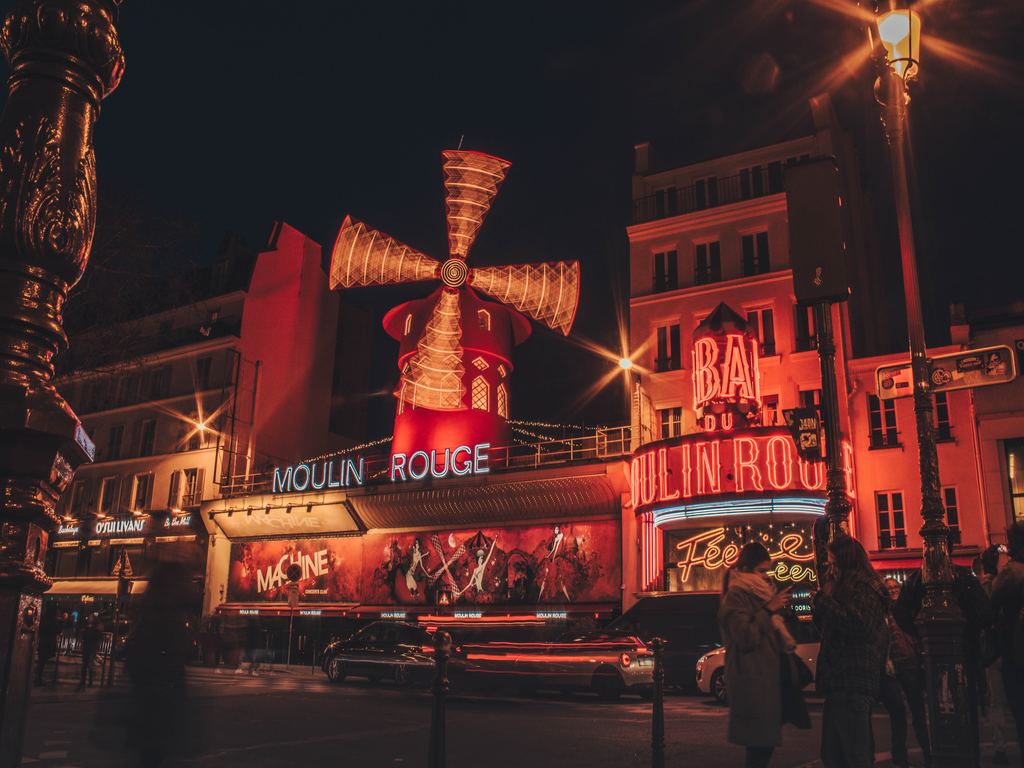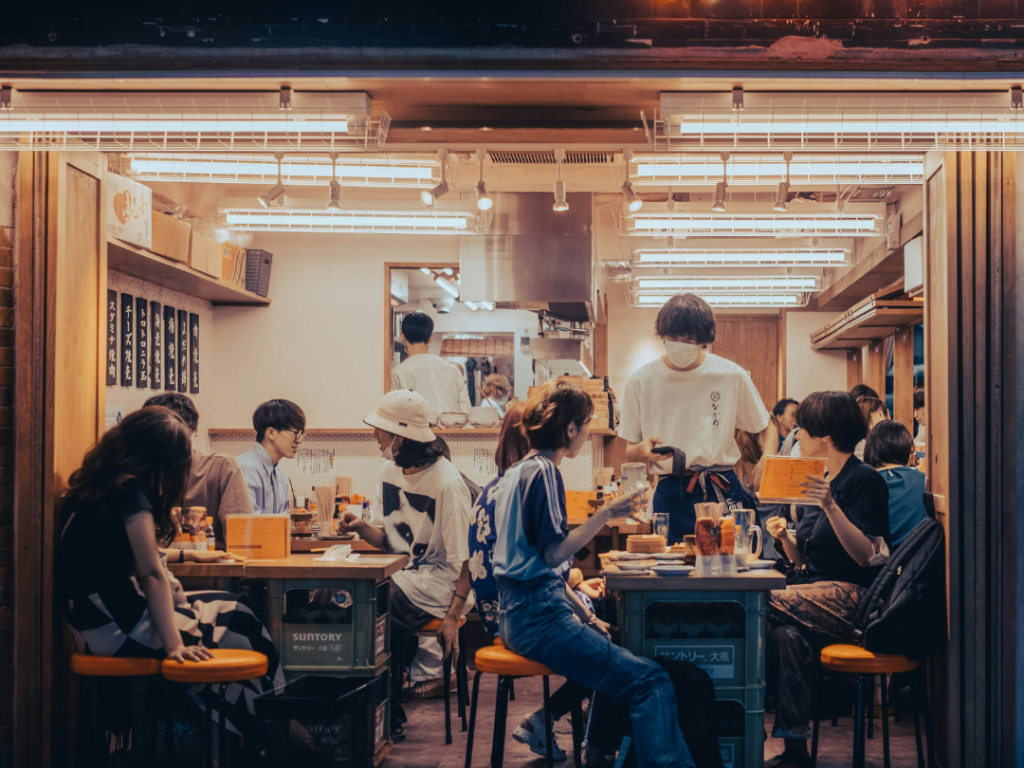Tokyo's culinary landscape is a harmonious blend of tradition and innovation, offering a plethora of dining experiences that cater to diverse palates. From intimate izakayas to upscale dining establishments, the city's gastronomic scene is both vibrant and varied. With so many options, where does a traveler begin? We tapped three Context experts to give us a few of their favorite local haunts that exemplify Tokyo's rich culinary heritage.
Sampota Cafe Nonbiriya
At this charming eatery run by a young Japanese couple, Context expert Anna suggests stopping in to experience a fresh take on traditional dishes. This cafe-turned-dining space combines homely charm with a curated menu of seasonal Japanese dishes. Expect thoughtfully prepared meals that showcase fresh, locally sourced ingredients, often paired with a delightful selection of sake, craft beer, or expertly brewed coffee.
Perfect for a laid-back meal, Sampota Cafe Nonbiriya exemplifies the heart of Tokyo’s neighborhood dining scene. "It's incredibly charming," says Context expert Anna. "They have all sorts of different sakes, which are always changing, and they do a really nice take on omurice, a classic Japanese dish. You can get it anywhere, but here it's more of a risotto style rice with tomato and squid ink."
Nakame no Teppen Honten
A true gem in the trendy Naka-Meguro district, Nakame no Teppen Honten is an izakaya with flair. The restaurant boasts a lively and convivial atmosphere, complete with counter seating around an open kitchen where chefs showcase their culinary artistry. Specializing in fresh seafood, the menu includes sashimi, grilled fish, and creative takes on classic izakaya dishes.
"You'll want to make a reservation here. The entrance is at the end of an alley, through a small door, but once you find it, the atmosphere is energetic and the food is delicious. If you like seafood, be sure to try the mackerel," says Anna. A visit here isn’t just about the food—it’s about soaking in the vibrant energy, chatting with friendly staff, and feeling like a local.
Department Store Food Floors
Did you know that Tokyo’s department stores are famous not just for shopping, but for their incredible food floors, known as depachika? "When you don't know where to go, head to the top of a department store. There are usually a collection of restaurants up there and often a rooftop garden area where you can relax and get an interesting view thanks to Tokyo's green roof policy," says Context expert Jay.Offering everything from high-end sushi and artisanal desserts to international cuisine and perfectly packaged bento boxes, depachikas are a feast for both the eyes and the palate. Visitors can sample an astonishing variety of foods, making these floors an ideal stop for travelers wanting to experience multiple aspects of Japanese cuisine in one place. "No matter where you eat, if you have the option of having cold soba or udon with a dipping sauce rather than in a hot broth, get the cold ones," recommends Jay. "They are cooked to the perfect texture, so are better cold."
Sahsya Kanetanaka
For those seeking a refined dining experience, Sahsya Kanetanaka in Omotesando offers an elegant blend of contemporary and traditional Japanese cuisine. This minimalist restaurant is a visual and culinary treat, emphasizing balance, simplicity, and seasonality. Rafael, a Context expert and architect in Tokyo, recommends this location for anyone who appreciates great food and architecture or design as well. "The space was designed by Hiroshi Sugimoto, a famous photographer. There's a beautiful garden in front as well, so for people who like design, it's a very interesting experience."
The dishes are artfully presented, showcasing ingredients at their peak freshness and flavor. "The menu is excellent. It stands out in terms of quality," says Rafael. From meticulously arranged sashimi platters to delicate soups and grilled specialties, each course at Sahsya Kanetanaka tells a story of Japan’s rich culinary heritage. The tranquil atmosphere, paired with the restaurant’s understated decor, provides a serene escape from Tokyo’s bustling streets.
Kamachiku
Set in a restored early 20th-century brick warehouse, Kamachiku is a unique udon restaurant that seamlessly blends history with culinary excellence. "The building was renovated by Kengo Kuma. He kept the kura, an old structure where they would keep the rice. That became the restaurant," says Rafael. Surrounded by a beautifully landscaped garden, the restaurant offers a serene and immersive dining experience.
Kamachiku is renowned for its handmade udon noodles, served in a variety of styles, from chilled with dipping sauces to hearty bowls in flavorful broths. "The specialty here is kamaage udon. The staff cook it right in front of you at the same moment you order, so it's really fresh. The tamagoyaki is fantastic, and the octopus salad is very good." Whether seated indoors or overlooking the garden, diners are treated to a peaceful meal that highlights the comfort of Japanese soul food.
Ready for more? Take a food tour with Context in Tokyo.
More Local Favorites
Yakiniku
Yakiniku, or what is known as Korean BBQ in the west, is believed to have flourished in Japan post-World War II. During the food shortages after the war, skilled Koreans obtained discarded beef and pork innards. Grilled over an open fire, these dishes gained popularity and eventually led to the evolution of today's yakiniku restaurants.
Toraji: This restaurant has a modest exterior, but the interior has a nostalgic, old-fashioned charm that makes you feel right at home.
Yang-no-ie Shin-Okubo: Featuring Korean home cooking, the menu may initially seem unassuming. However, rest assured that every dish is delicious, so feel confident in ordering anything that appeals to you.
Yukidaruma: Actually a Mongolian lamb barbecue, this restaurant is a retirement project run by a former sumo wrestler, with generous portions to match.
Izakayas
Tokyo is home to numerous izakayas, which are casual Japanese pubs that serve a wide range of dishes and drinks. For most of the izakayas in Tokyo, you’ll probably need to book a day or two in advance. Most of them should have online booking in English.
MAGEOMON: Known for its eclectic decor and hearty “Greasy Spoon” dishes, The Breakfast Club is a favorite for those looking for a classic British breakfast with a fun twist.
Kanae: An ideal choice for those seeking luxury, The Wolseley offers breakfast classics in a sophisticated setting. Try their Full English breakfast for a lavish start to your day.
Kiura: For a unique brunch experience, Duck and Waffle’s menu features quirky takes on comfort food, including their famous duck and waffle dish that brings a new spin to breakfast.
Noodles
Mazesoba Shichi: Ordering at the machine is easy, but if it’s your first time, you might want to watch a local order first. You can customize your meal by choosing your preferred spice level and quantity of noodles, depending on what you’re craving.
Ginza Rōsokuya: Located in Ginza, Tokyo’s upscale shopping district, this noodle restaurant is a popular lunch spot. If you’re able to handle heat, try the spice that makes your mouth numb. And don’t worry, they have menus in English if your Japanese isn’t strong.
Dashin So-an: Serving mouth-watering soba, this quaint restaurant is tucked away and well off the beaten path. While in the area, check out the Shimokitazawa flea market if you have time.
Nagi: This small ramen restaurant, open 24 hours, is semi-hidden in a narrow alley in Shinjuku City. There may be a line depending on the time of day, but don’t worry, it'll go quick. They don’t take cards, so be sure to have some cash on hand.
Gourmet
Tokyo is a culinary paradise with a vast array of gourmet foods to indulge in. The city is home to a significant number of Michelin-starred restaurants, each providing unique dining experiences that push the boundaries of Japanese and international cuisines. For those who appreciate incorporating upscale experiences into their travels, Tokyo presents exciting opportunities. Note: Plan ahead if you want to eat at gourmet restaurants in Tokyo, as many book reservations weeks or months in advance.
Ryugin: One of the most sought after bookings in Japan, Ryugin is located seven stories up with views over Hibiya Park and Tokyo.
Sushi Saito: Securing a reservation can be challenging, but if you manage to get a seat at the table, you'll enjoy some of the world's finest sushi.
Quintessence: A 3 star Michelin restaurant serving modern French cuisine. The menu changes daily, based on what ingredients are available locally.
Tempura Kondo: Tempura, a beloved Japanese dish of battered and fried seafood and vegetables, is the specialty at Tempura Kondo, a 2 Michelin star restaurant led by seasoned chef Fumio Kondo.
Bars and Nightlife
We recommend spending an evening in Shinbashi, where Japanese "salarymen" go for an affordable drink and bite after work. Hop on the train to Shinbashi Station, exit at SL Square, and explore the nearby streets brimming with bars and izakayas. And before a night out in Tokyo, it's essential to acquaint yourself with sake. Sake, a traditional Japanese alcoholic beverage made from fermented rice, holds a significant place in Japan's cultural heritage.
Tachinomi Nagi: A standing sake bar in Shibuya that only serves sake from Fukushima.
Kingyo: A tiny sake bar nestled in an alley of Nakano City, a quiet neighborhood loved by locals.
Eagle Suntory Lounge: Looking for a unique experience? Look no further. The chandelier-lit gem oozes 1930s charm.
Nakano Beer Kobo: A tiny bar where you can try local craft beer, tucked in a backstreet of Nakano City.
Musashi Shinbashi Robata: A local neighborhood landmark using the traditional robatayaki – or simply ‘robata’ – cooking style, or ‘fireside cooking’ in English.
Fish & Sake Hanatare Shimbashi: This small restaurant accommodates only 12 guests and is renowned for its potato salad, which you mix together yourself.
Torishige: This grill bar specializes in Yakitori, a Japanese style of skewered chicken. You can enjoy virtually any part of the chicken grilled on a skewer, including breast, thigh, mince, liver, gizzard, and skin.
While in the area, you can pay your respects at the wonderfully urban Karasumori Shinto Shrine. And if you want to keep going, dive into a subterranean warren of tiny bars underneath this building, with the slightly hidden entrance to this underground world here.
From classic ramen dishes to experiential dining experiences, Tokyo's culinary landscape has something for everyone. Dive into these recommendations, and taste Tokyo like a local.
Want more great recommendations on things to do in Tokyo? Check out our Tokyo Travel Guide for more! Or tour with these great experts on your next trip to Tokyo.













